Tsukemono: The Complete Guide to Japanese Pickles

Every continent and culture has their own style of pickle. In the United States and Canada there is the classic dill; in Germany there is sauerkraut; in nearby Korea there is kimchi. And while all of these examples in a way represent the culinary culture of those who eat them, it is much harder to pinpoint a particular pickle in Japan. Some may claim the umeboshi due to its appearance in the ubiquitous bento box while others might defend the simple kyuuri with its subtle flavors. Because there are so many varieties of Japanese pickles, this article was created to help any foreigner to Japan, whether stepping into their local Japanese market or sitting down at a traditional Japanese restaurant, understand the pickles they are about to buy or eat. Also, don’t forget to check out the most important tip you will ever read on Japanese pickles at the bottom of this article!
A Closer Look at Japanese Tsukemono
“Tsukemono”, or Japanese pickles, have existed since ancient times as a way to preserve fruits and vegetables. Seawater was one of the first ingredients used in Japan, and through the ages other pickling agents have been developed, from vinegar and soy sauce to miso and the leftover bits from manufacturing sake. Although modern refrigeration did away with the need for pickling everything, tsukemono are still an essential part of the Japanese diet. Along with rice and miso soup, pickles frequently accompany meals in Japan. They provide a variety of colors, flavors, and textures to balance the main dish, and they’re also known to provide numerous health benefits such as vitamins, fiber, and probiotic cultures that promote digestive health.
Whether you’ve eaten tsukemono before and want to figure out what it is exactly that you’ve been eating, or you’re interested in trying tsukemono for the first time, here’s a handy guide with everything you need to know about Japanese pickles:
Shiozuke (salt pickling)
Shiozuke pickles are the simplest and easiest tsukemono to prepare. Thinly sliced vegetables are layered with salt and weighted down, releasing lactic acid which mixes with the salt to cause fermentation. Because of their simplicity, shiozuke pickles require fresh, seasonal vegetables to achieve a light, crisp texture. To make shiozuke at home, simply slice your vegetables into bite-sized pieces and sprinkle with about one teaspoon of salt per cup of veggies. Make sure to rinse off the salt before serving.
Common shiozuke pickles:

Hakusai no sokusekizuke
Hakusai no sokusekizuke (quick pickled napa cabbage) is one of the most common tsukemono. It’s fast and easy to make, so it’s often used as a side dish for Japanese set meals. The pickled cabbage may be seasoned with yuzu citrus and togarashi chili pepper to give it a bright and slightly spicy flavor.

Unnoticeable pungency
Kyuri asazuke
Kyuri asazuke (salt-pickled cucumber) is typically served sliced up as a side dish, but whole pickled cucumbers are also sold as a popular street food during the summer in Japan.


Surprisingly, freshly scented!
Umeboshi
Umeboshi (pickled plum) is a type of heavily salted pickle made with sour Japanese plums. Red umeboshi nestled in a bed of white rice is a common sight in Japanese bento lunches. While the plums are green before pickling, they get their distinctive color from the red shiso leaves used in the pickling process. The pickling brine can later be used to make beni shoga pickles.
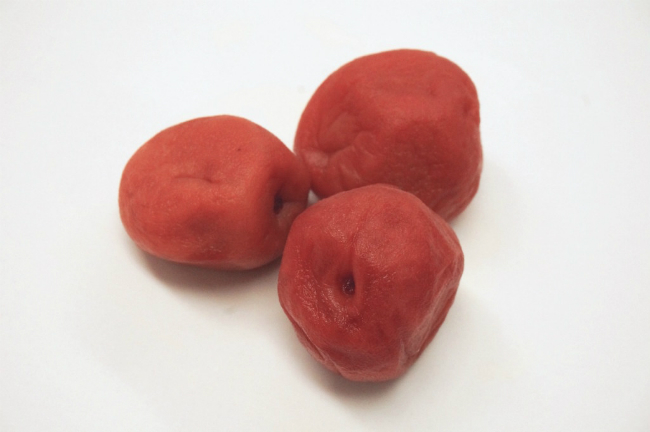

Pungent when heated
Suzuke (vinegar pickling)
Suzuke pickles are brined in Japanese rice vinegar, which gives them a crunchy texture and a sweet and tangy flavor. Due to the low acidity of rice vinegar, suzuke pickles will not keep for long out of the refrigerator.
Gari
Gari (sushi ginger) is thinly sliced young ginger that has been pickled in vinegar and sugar. It has a light, sweet taste and is often eaten as a palette cleanser between bites of sushi.
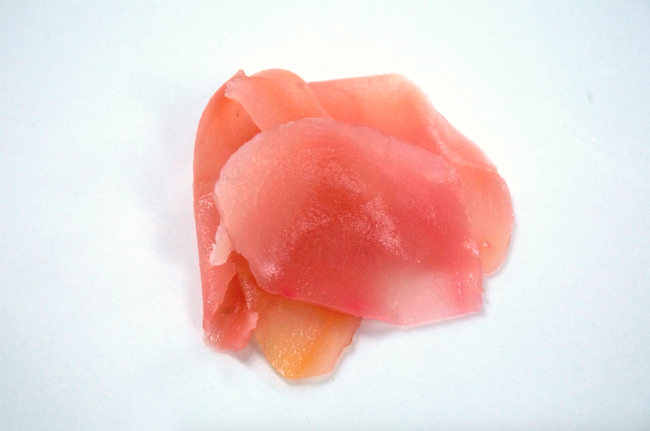

A light aroma
Amazuke rakkyo
Amazuke rakkyo (sweet pickled scallion) is Japanese scallion that has been brined in vinegar and sugar. Togarashi chili pepper can also be added to the brining solution to give an extra spicy kick. The flavor of rakkyo is often described as something between pickled garlic and onion, and its sweet and bold flavor makes it a popular curry topping.
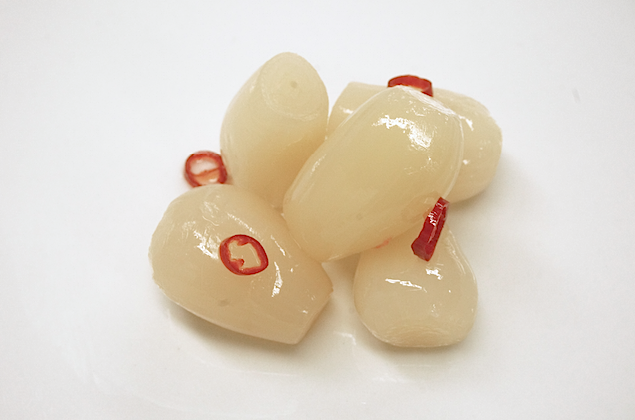

Delicious, but may cause heads to turn
Beni shoga
Beni shoga (red pickled ginger) is made from thin strips of ginger pickled in the red brine left over from umeboshi. It’s the stuff that you usually find served with dishes like gyudon beef bowls, yakisoba, takoyaki, or okonomiyaki.
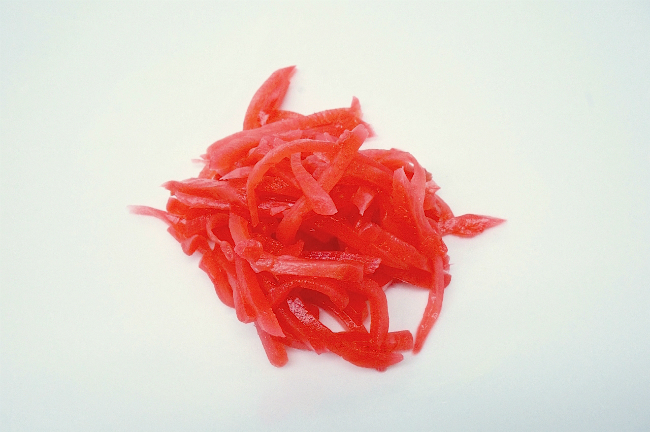

Refreshing, yet bold
Shoyuzuke (soy sauce pickling)
Shoyuzuke, or pickling with a soy sauce base, is not as common as shiozuke (salt pickling) but is still delicious. The soy sauce is usually combined with vinegar and sugar, which gives shoyuzuke pickles a sweet and salty flavor. One of the most popular foods cured in soy sauce is actually not a vegetable, but ikura salmon roe.
Ninniku shoyuzuke
Ninniku shoyuzuke (garlic pickled in soy sauce) is a popular tsukemono that mellows the powerful odor and strong biting taste of raw garlic.
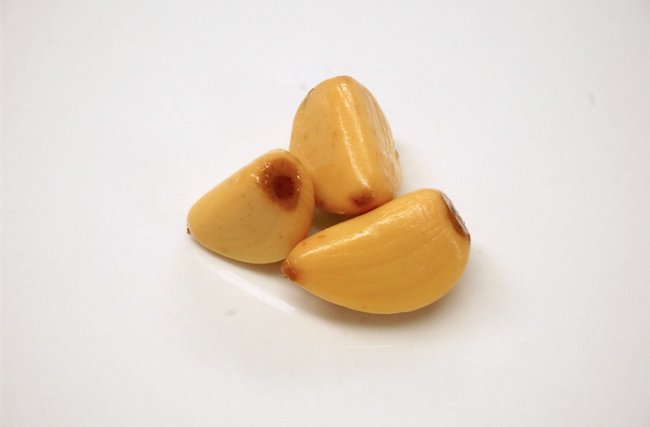

Warning: BOLD & PUNGENT!
Fukujinzuke
Fukujinzuke (seven pickle relish) is a crunchy chutney-like relish made up of different vegetables cured in soy sauce. It’s named for the “shichi fukujin”, or seven gods of Japanese myth, because fukujinzuke pickles were originally made from seven different kinds of vegetables. Fukujinzuke is a common garnish for Japanese curry.


No need to pinch your nose
Misozuke (miso paste pickling)
Misozuke are Japanese pickles cultured in miso paste. They’re made by preparing a mixture of miso with seasonings like mirin, garlic, and ginger and then burying sliced vegetables in the miso “bed” for a couple of hours to a couple of weeks. The pickling bed can be used multiple times before it becomes watery and loses flavor. In addition to miso-pickled vegetables, fish and pork are often cured in miso then grilled, and miso-pickled egg yolks and tofu are also considered delicacies in Japan.
Nasu
Nasu, or Japanese eggplant, is one of the most popular vegetables to pickle in miso. The sweet scent of miso paste goes well with eggplant, which becomes more flavorful the longer it’s allowed to cure.
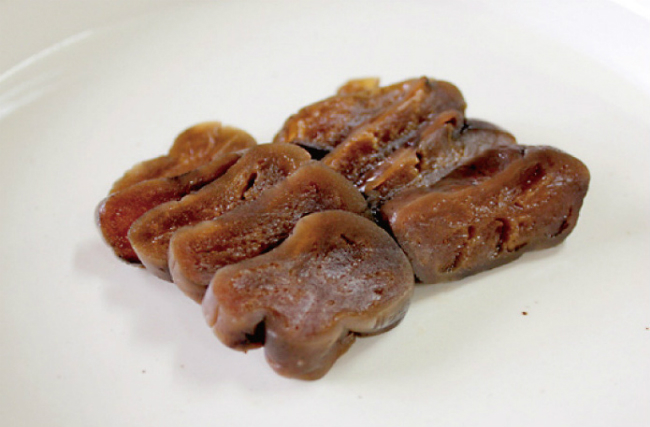

Tastes and smells better than it looks
Nukazuke (rice bran pickling)
Nukazuke is one of the more complicated Japanese pickling techniques. It uses rice bran, the hard outer layers of rice, which is roasted and mixed with salt, kombu seaweed, and water to make a mash called “nukamiso” or “nukadoko”. The rice bran pickling bed relies on healthy lactobacillus bacteria that must be stirred everyday by hand to prevent toxic bacteria from growing. The result is crisp pickles loaded with vitamins and probiotics that aid in digestion. As with miso paste pickling, rice bran mash can be used over and over, but unlike misozuke, rice bran mash can be kept indefinitely if properly cared for.
Takuan
Takuan (yellow pickled daikon radish) is probably the most famous nukazuke pickle. Daikon radishes are dried in the sun then packed in a rice bran mash and pickled for a few months. Persimmon peels may be added to help the color change from the pale white of raw daikon to the distinctive golden yellow color of takuan.
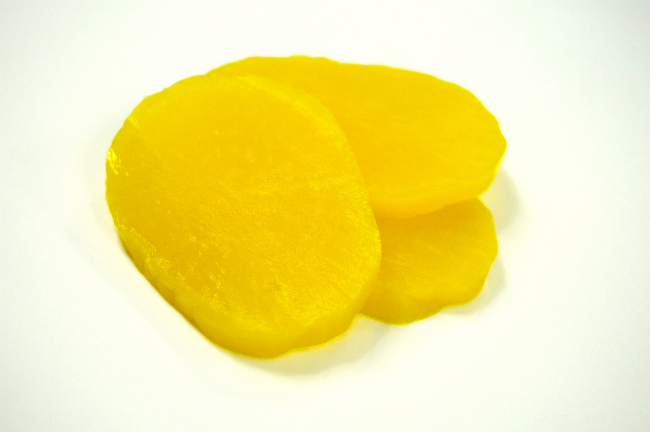

Festively colored, festively pungent
Kasuzuke (sake lees pickling)
Kasuzuke pickles are prepared from sake lees, the mash that’s left over after filtering sake, which has been mixed with salt, sugar, and mirin. Kasuzuke pickles have a complex, slightly alcoholic flavor depending on how long they were pickled for and can last up to several years.
Narazuke
Narazuke are traditional pickles from the Nara region that have a history going back over 1,000 years. Common vegetables for narazuke include “uri” (cucumber melon gourd), baby watermelon, ginger, and cucumber. Because of their alcohol content, narazuke are a popular pickle to enjoy with beer and sake.
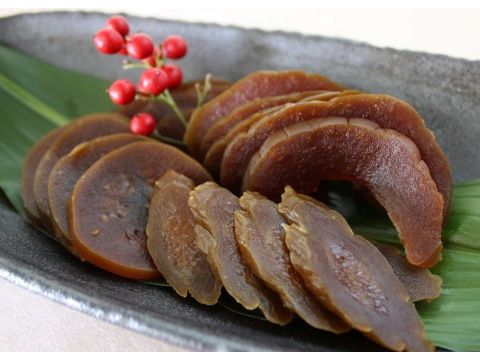

Oooh…
Behind the Scenes of My Tsukemono Adventure
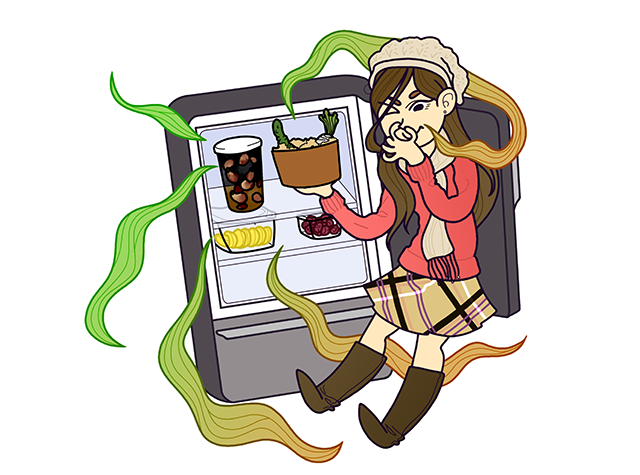
You can’t have a complete guide to Japanese pickles without pictures, and it was up to this intrepid reporter to seek out these tsukemono for your viewing pleasure. What I wasn’t expecting when beginning this project was the pungent aroma these pickles left not only in my kitchen, but my fridge as well (not to mention the several attempts at trying to wash the smell from my hands after wrapping up shooting). Although I love Japanese pickles, my housemates weren’t too happy with having so many stored in such a tiny place. And here is where I leave you with a very important piece of advice for any foreigner who is bringing tsukemono home for the first time:
Airtight Containers! Unless you want to be accused for odor that you absolutely did not cause, remember to pack your pickles in air tight containers. If you happen to have a pickle juice spill in the fridge, you can get rid of the smell with baking soda, known as “juso” or “tansan” in Japanese (look for 重曹 or タンサン on the package).
I also recommend always returning the pickles to the fridge after you’re done eating—warm ninniku shoyu with rakkyo... yikes!








